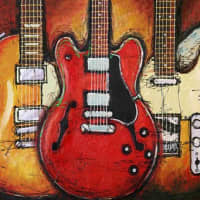For the purposes of continuing this discussion without misunderstanding, there are a few distinctions I think may be useful. (I'm not suggesting these terms are universally adopted, BTW. I'm just trying to be clear about what we're trying to say.)
"Never officially imported into…" conveys to me that an instrument was, for instance, only intended for the home market in Japan, but has been personally imported by a musician. For instance, a guitarist in the US might buy a Tokai on-line from a dealer in Japan. This may make it the only such Tokai in the whole of the US, and it could never be described as "new", but it is still a legitimate Tokai instrument.
"Parallel imports", or "grey imports" refer to goods bought in quality by a dealer in one territory from a distributor in another territory, who was not supposed to sell them outside the agreed national borders. These may be regarded as genuinely "new", and also as authentic product from the branded manufacturer. (They may not have the same level of after-sales support as the ones supplied through legitimate channels.)
"Unauthorized" instruments are – I infer from your usage – made by plants who were making licensed product at one time, but are now making instruments bearing a brand they are no longer entitled to use. These instruments might look totally authentic, but may or may-not conform to the original brand's specifications, and will not have passed that brand's QC. If that dubious provenance can be proven, these instruments are not legitimate.
"Bootleg" products are made by factories who have no connection with – still less licence to manufacture for – the brands they show on the product. For instance, "Chibsons" have no legitimate claim to the Gibson brand, and their guitars are usually only rough approximations of the real instruments. They're fakes. However, I have also heard multiple claims of fake Epiphones. While they're worth less money, they're also easier to copy…
Out in the real world, the problem we all face is it's getting harder and harder to tell these categories apart. There are people creating convincing copies of '62 Fender Strats apparently worth $20,000, so who am I to call "fake" on an instrument that may or may-not have come from a factory that was making legitimate Tokais at the time?
This isn't some grandstanding rhetoric from me: I'm struggling with how to deal with the whole genuine/fake issue.
































